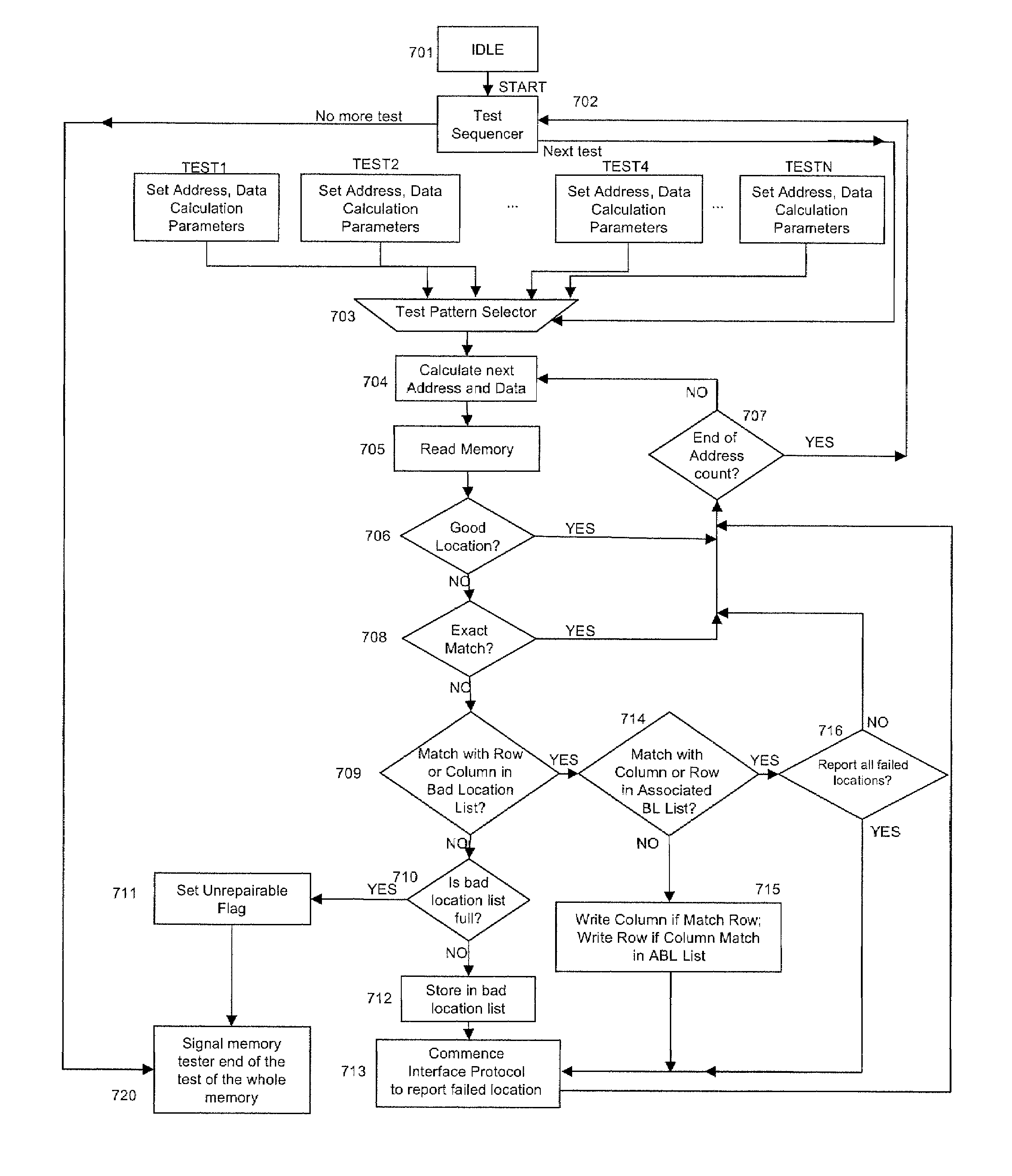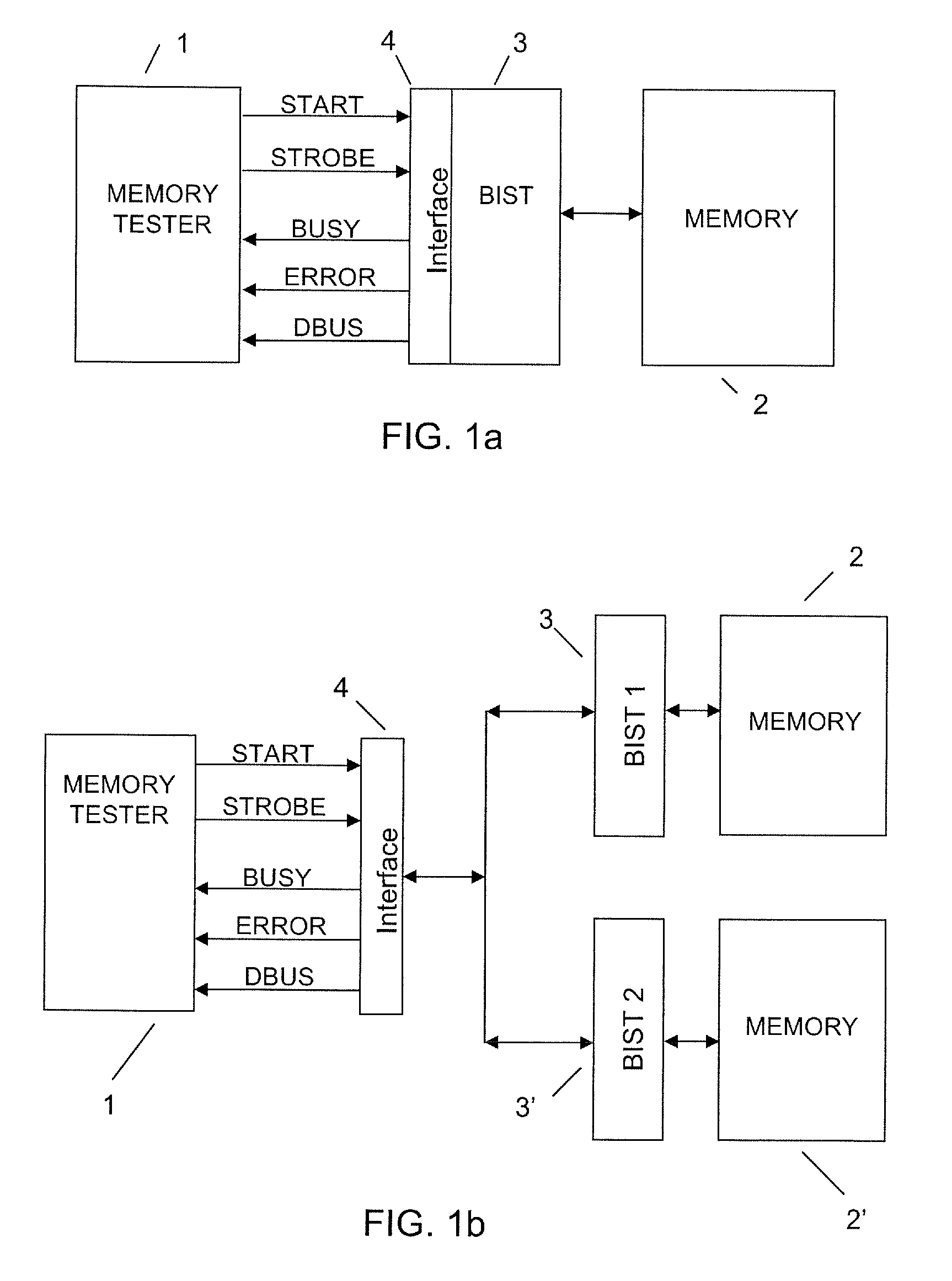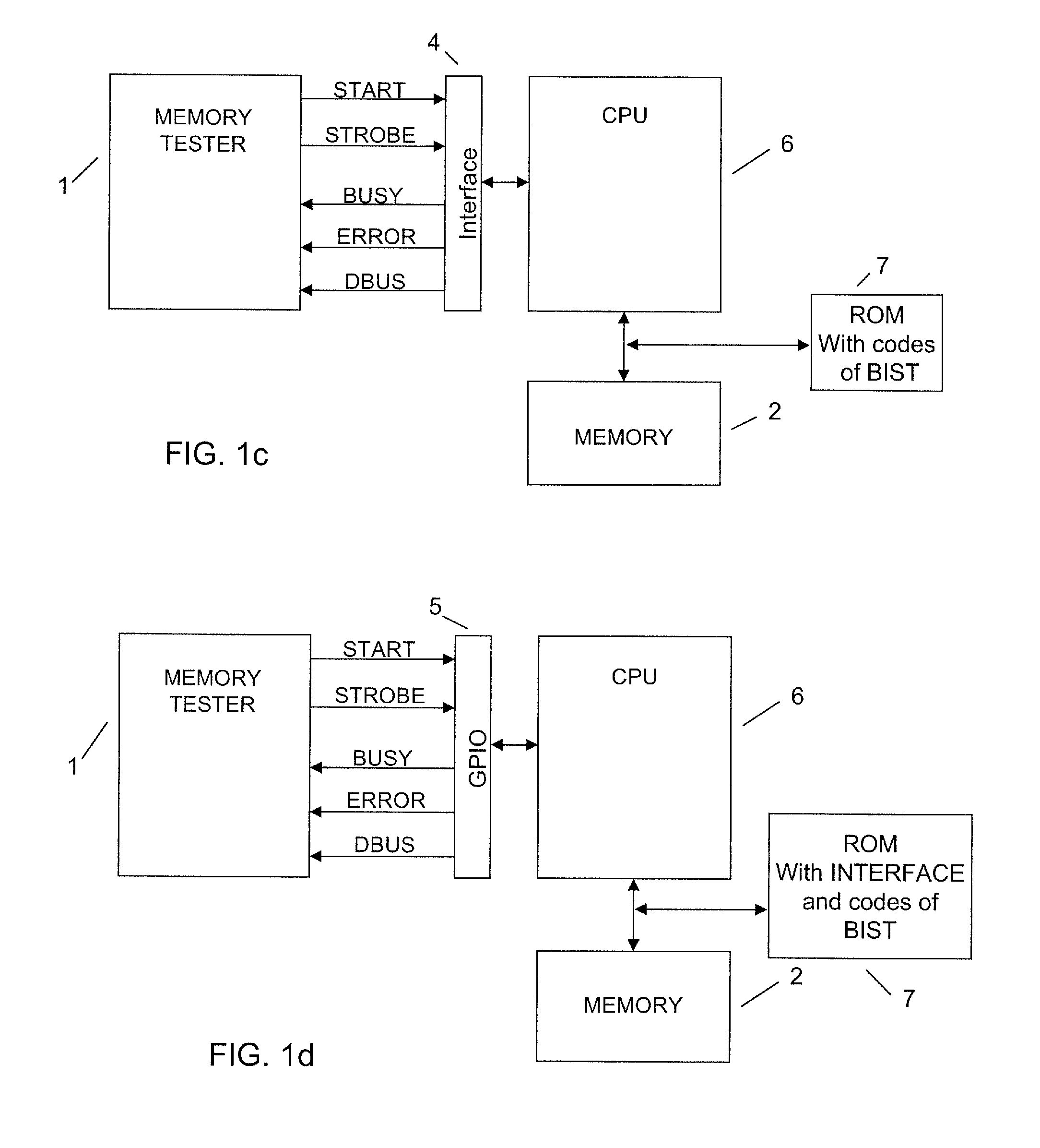Method and system for memory testing and test data reporting during memory testing
a memory and data technology, applied in the field of memory testing, can solve problems such as flagging memory as unrepairable, and achieve the effects of reducing the number of pins used or necessary, narrowing the interface, and reducing the cost of the chip
- Summary
- Abstract
- Description
- Claims
- Application Information
AI Technical Summary
Benefits of technology
Problems solved by technology
Method used
Image
Examples
second embodiment
[0044]Looking now at FIG. 1b, which shows the memory testing system of the present invention, memories 2 and 2′ are coupled to BIST 3 and BIST 3′ respectively, which in turn are coupled to the interface 4. In this embodiment, a single memory tester 1 can test multiple memories, 2, 2′. Similarly to the memory testing system shown in FIG. 1a, the interface 4 in this embodiment communicates with the memory tester 1 via the following signals: START, STROBE, BUSY, ERROR, DBUS. A variation of this embodiment is to couple multiple embedded memories to one BIST, which is coupled to the interface 4.
third embodiment
[0045]FIG. 1c shows the memory testing system of the present invention, in which a CPU 6, or other processor, extracts failed memory location information from the memory, instead of BIST 3. Test patterns are loaded into the instruction memory for the CPU 6. The CPU 6 then executes the instructions from the instruction memory and tests the memory 2. The CPU 6 is coupled to the interface 4, which communicates with the memory tester 1.
fourth embodiment
[0046]FIG. 1d shows the memory testing system of the present invention, in which a general processor input / output interface (GPIO) replaces the interface 4 in the memory testing system shown in FIG. 1c. GPIO is an existing standard interface. Like the interface 4 in the memory testing systems shown in FIGS. 1a, 1b, and 1c, GPIO communicates with the memory tester 1 via signals START, STROBE, BUSY, ERROR and DBUS. This embodiment is an example of using an existing interface to implement the present invention. GPIO could be used with a BIST instead of a CPU.
[0047]The interface protocol of the present invention provides a handshake between the memory tester 1 and the BIST 3, but does not in any way change or limit the memory tester, the BIST, or the memory testing mechanism inside the chip. The BIST can have many different functions, and generate all kinds of different test patterns. As mentioned above, a CPU can replace the BIST to extract the failed memory location information from t...
PUM
 Login to View More
Login to View More Abstract
Description
Claims
Application Information
 Login to View More
Login to View More - R&D
- Intellectual Property
- Life Sciences
- Materials
- Tech Scout
- Unparalleled Data Quality
- Higher Quality Content
- 60% Fewer Hallucinations
Browse by: Latest US Patents, China's latest patents, Technical Efficacy Thesaurus, Application Domain, Technology Topic, Popular Technical Reports.
© 2025 PatSnap. All rights reserved.Legal|Privacy policy|Modern Slavery Act Transparency Statement|Sitemap|About US| Contact US: help@patsnap.com



